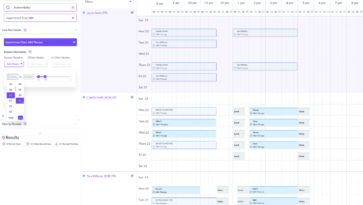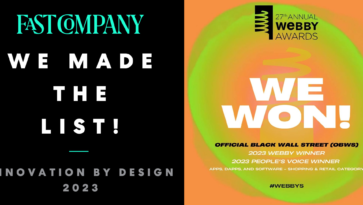This article originally appeared in Switch and Shift
Now that Millennials are the largest generation in the workforce, the business world has officially entered the age of digital natives. Unlike its predecessors, this valuable rising cohort of the workforce has grown up with instant access to information and with the intuitive interfaces of multitouch devices.
Tech-savvy and used to multitasking, people with the Millennial mindset are always plugged into some sort of device, and they are incredibly fickle and impatient when it comes to the design, efficiency, and user experience of a digital product. If they don’t like it, they won’t use it. But it’s not their fault. Hypercompetition and the power of choice are major contributing factors. There are multiple software-as-a-service products for any need you might have, and they’re only a click or two away (and often free).
Why should this matter to business leaders? Because digital natives want the technology they use at work to perform just as well and be just as intuitive as the technology they use in their personal lives. This desire has driven the massive consumerization trend among business applications and has raised the bar for organizations to pay closer attention to the user experience of their internal systems and software.
Demands of Digital Natives
People with the Millennial mindset expect more out of business technology than just the automation of a complicated task. They gravitate toward customizable apps and digital products with an intuitive design to anticipate user needs, and they want the software they use and the information they need to be presented without a hitch, even when switching between devices or applications.
Because they’re in constant communication through texting, social media, and email, 88 percent of Millennials prefer collaborating with co-workers to working in isolation. But they don’t want that collaboration to happen in person or on the phone. They would rather communicate through technology and fully embrace the “work whenever and wherever” mindset. In response, collaboration tools have shifted to accommodate on-the-go usage and input from multiple parties on a single project at different times throughout the day.
All of these demands are reasonable considering that Millennials, and all generations for that matter, just want the ability to do their jobs faster, more efficiently, and with as few tool-related headaches as possible. As the number of working Millennials continues to increase, and as they move into positions of influence, this trend of human-centered design, design based on how people actually work, will further affect the business world.
Millennials as Business Technology Trendsetters
It’s often incredibly easy for an employee to set up an alternative platform to use at work, and IT departments have much less power than they once did to prevent users from circumventing their safeguards. As smart companies have stopped getting locked into multiyear contracts, enterprising executives have less of a financial barrier to listening to the software desires of the masses. Thus, companies that want employees to use what they want to use (while still standardizing processes across departments) and account for changing trends have a hiring advantage.
Millennials have also led to the rise of alternative means of communicating, such as Slack, and the growth of “bring your own device” (BYOD). Whether it’s a particular phone, tablet, or computer, the BYOD method allows employees to work on the devices that they’re most comfortable with, which increases productivity and reduces costs.
Over the next decade, the technology design trend will take the shape of improved connection and customizability. Every user will be presented with the interface that’s best suited for their needs, and software will be simplified to enable mid-level employees to design, build, test, and deploy their own workflow tools. Software will be custom-fitted to each organization’s optimal process, and collaboration will be better and easier than just chat. Millennials will be able to customize how they work beyond just using their own devices, they’ll configure their own apps, automation rules, and interfaces.
3 Ways to Prepare for Technological Transformation
As digital natives grow in dominance in the workplace, the technological changes they’re driving will lead to growth and further transformative disruptions. To get ready for this change, here are three strategies:
- Use your Millennial-minded individuals | Take advantage of the Millennials in your organization. Enable them to be “intrapreneurs” who drive internal innovation, and empower them with a forum to call out pain points and figure out how to solve them through technology.
- Examine your operational processes | Think about how your processes could be reasonably enhanced if you didn’t have to worry about technology constraints, and then think about how those changes would leverage an existing competitive advantage or create new ones. This exercise can lead to innovative process improvements as well as new business opportunities your leaders might be blind to. Collaborate with others in your company during this exercise to discover pain points you didn’t know existed and potential innovative solutions.
- Buy or build software with Millennials in mind | When considering how to enhance your operational processes, focus on speed, simplicity, future extensibility, and a well-designed user interface because those components are crucial to attracting and retaining talent. Once you have buy-in from the larger workforce to make changes, you can approach whether you’re going to build or buy.
When evaluating your current software, see whether there’s a plug-and-play option that optimally serves your company’s needs. If there is one, great! If not, building custom software or a new application layer on top of existing software is still a feasible solution, even if it is a small investment.
The age of digital natives is transforming how we work. All generations are getting used to business software that is designed just as well as the consumer-facing apps they use in their personal lives. When companies only provide slow, out-of-date technology or software that isn’t intuitive, all generations will struggle to keep up with companies that empower their employees and focus on the user experience of the digital tools that their teams use every day.
Companies that want to boost employee retention should make sure they are listening to their employees and focus their platform decision-making process and policies on encouraging the broader workforce to have a say, ultimately giving employees the means to introduce new, more optimal solutions as things evolve.







